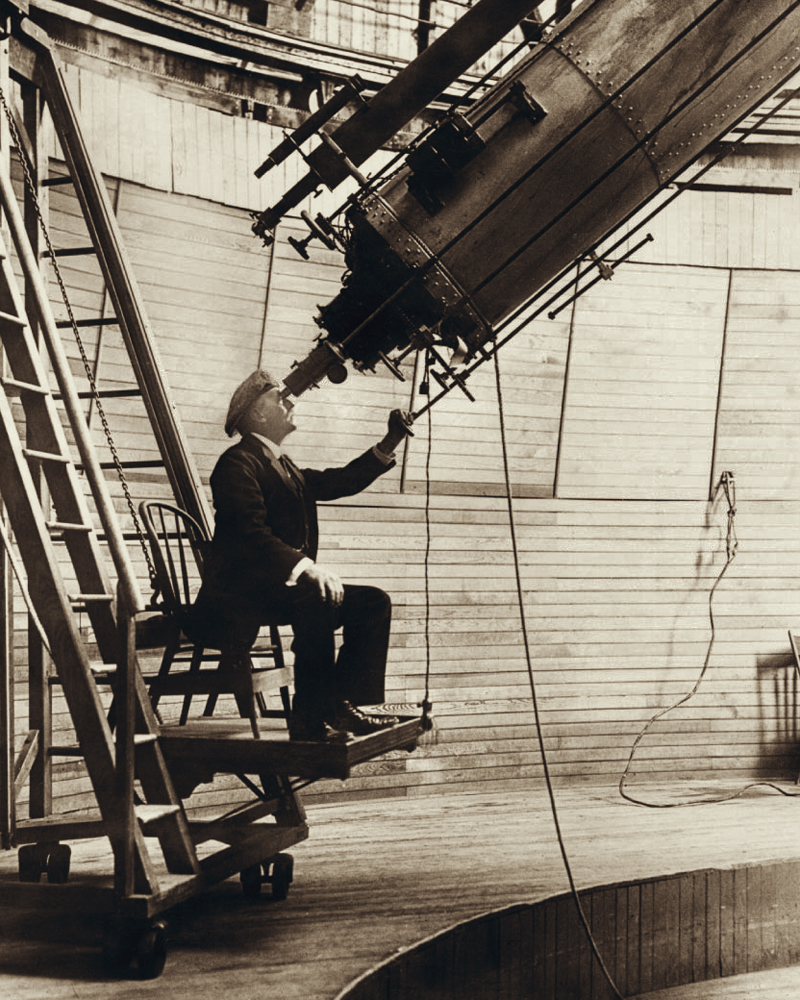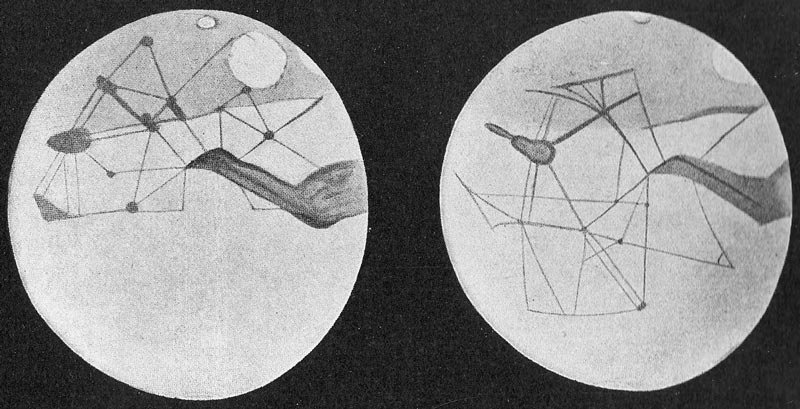Astronomer Percival Lowell did some brilliant work in analyzing our solar system, but he took a wrong turn at Mars. In this classic 1914 photo, Lowell is examining Venus, but it was the Red Planet that burned him. At his Flagstaff Observatory, he “discovered” canals in Mars’ surface, which he felt must have been man-made–or at least Martian-made. These beliefs did not raise his stock in the scientific community. The opening of “Martians Build Two Canals in Two Years,” an article by Mary Proctor, daughter of early Mars mapper Richard A. Proctor, in the August 27, 1911 New York Times:
“According to a telegram dated Aug. 17, from Flagstaff Observatory, Arizona, Dr. Percival Lowell announces the rediscovery of two new canals of Mars, which were seen for the first time at the last opposition in 1909. The canals are now very conspicuous, and attracting world-wide attention because of their startling significance.
Measurement of their dimensions shows each of them to be a thousand miles long and some twenty miles wide. In comparison, the canon of the Colorado River would be a secondary affair. What has been the cause of these vast chasms which have suddenly opened on Mars, where the internal forces are far less than could be possibly be the case with our planet? Nothing like it has ever been seen or heard of before. To witness the coming into existence on another world of a surface feature in what we know to be no airy cloud-built fabric, but the solidest of ground, is in its character an event so far of unique occurrence.
That these vast chasms have been caused by some internal disturbance is out of the question, for shattering of the sort would certainly have left its mark in yawning, cavernous abysses–such as are on our own planet in regions where volcanic disturbances have taken place. In the case of the new canals recently observed on Mars, such widespread, shattering effects are altogether absent, and as Dr. Lowell expresses it: ‘The outcome is purely local, and of most orderly self-restraint at that. An enormous change in the planet’s features has taken place, with no concomitant disruption beyond the bounds it set. The whole thing is wonderfully clear-cut.’
That the new canals were not a mere illusion or vagary of the imagination is proven by the fact that they are again visible, but they are as great a problem now as they were when first seen in 1909. Canals a thousand miles long and twenty miles wide are simply beyond our comprehension. Even though we are aware of the fact that, owing to the mass of the planet being a little less than one-ninth of the earth’s mass, a rock which here weighs one hundred pounds would there only weigh thirty-eight pounds, engineering operations being in consequence less arduous than here, yet we can scarcely imagine the inhabitants of Mars capable of accomplishing this Herculean task within the short interval of two years.”


